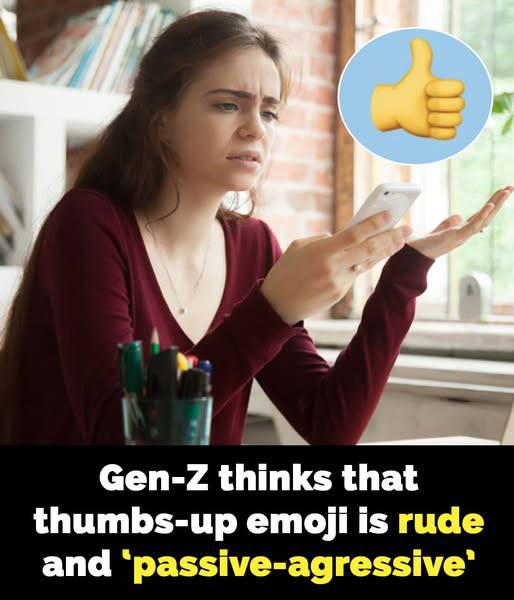
Generational gaps lead to differences in communication styles, and the latest debate is about the thumbs – up emoji. Older generations use it as a simple acknowledgment or approval, but many Gen – Z people think it’s outdated, impersonal, and even passive – aggressive. This raises questions about digital etiquette and workplace communication.
Emojis are important in online chats, adding tone and context. But their meanings have changed. For Gen – Z, the thumbs – up emoji no longer means friendly approval; it often feels dismissive or sarcastic, causing discomfort in digital talks.
Why Gen – Z Dislikes the Thumbs – Up Emoji
A young professional shared on an online discussion about using the thumbs – up emoji at work: “I started a new job using Microsoft Teams. The platform has limited emoji reactions, and most use the thumbs – up. But it feels unsettling and passive – aggressive to me. I’d rather use a heart or short messages.”
Many users agreed, like a 24 – year – old who said, “For younger people, it often seems passive – aggressive, not supportive.” Another said, “It feels unsettling because it’s impersonal.” This shows how digital communication has changed. Older generations use it to quickly acknowledge, while younger ones think it lacks warmth.
How Emoji Meanings Have Shifted
Gen – Z has redefined several emojis. The crying – laughing emoji (😂), once for laughter, is now seen as outdated; many Gen – Z users prefer the skull emoji (💀) for “so funny, I’m dead.” The checkmark emoji (✔️) seems cold or too formal, and the classic smiley face (🙂) can be used sarcastically.
Why It Matters in Workplace Communication
This emoji – usage shift, though seemingly small, can matter, especially at work. A Gen – X or Millennial manager’s thumbs – up may seem neutral or positive, but a Gen – Z employee might see it as dismissive. With more remote work, understanding these differences is key to avoid miscommunication and build an inclusive work environment.
Should You Stop Using the Thumbs – Up Emoji?
Should we stop using the thumbs – up emoji? Not necessarily. Context matters. In casual talks or among those who see it as neutral or positive, it’s still useful. But in professional settings, especially with younger colleagues, using words like “Sounds good!” or “Got it!” is better.
Bridging the Digital Communication Gap
The thumbs – up emoji debate shows that communication, both spoken and digital, is always changing. Just like slang, emoji meanings change. Recognizing these shifts helps different age groups interact better.
What’s your opinion on this emoji – etiquette shift? Have you noticed generational differences in emoji use? Share your thoughts in the comments!